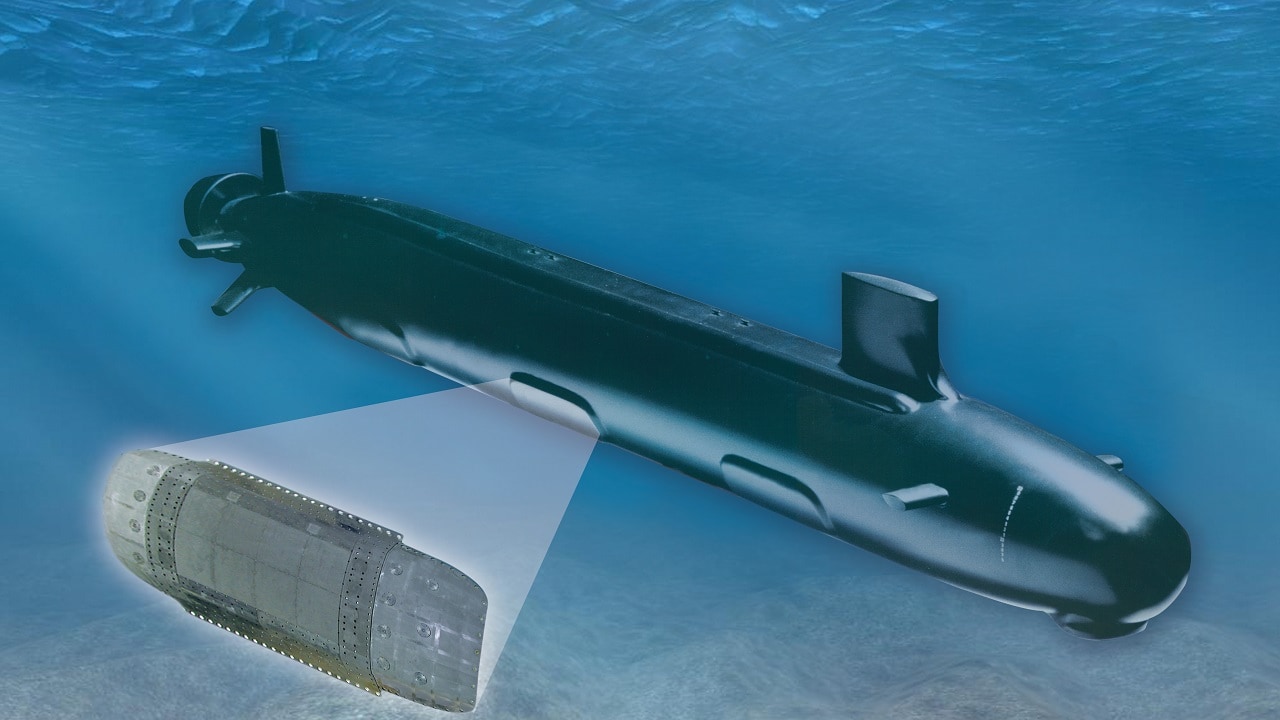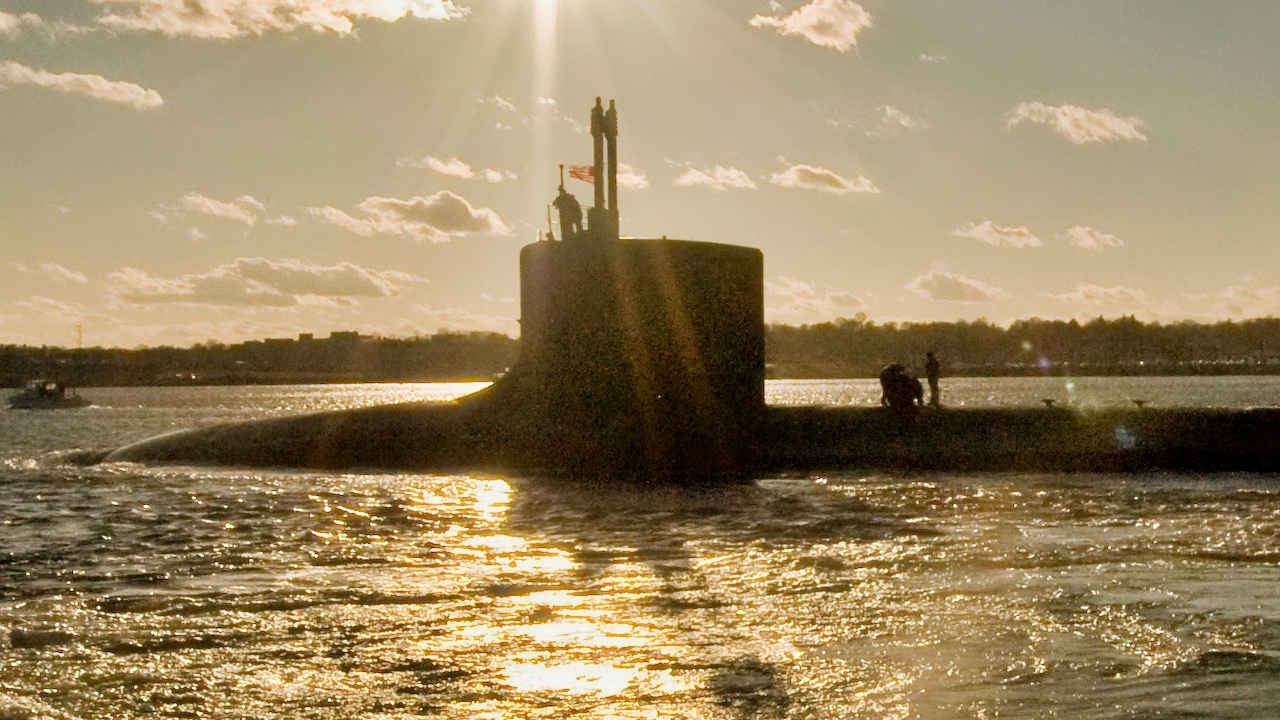Key Points and Summary – Four Ohio-class SSGNs—each able to fire 154 Tomahawks—retire from 2026–2028, removing 616 missiles from the fleet.
-The Navy’s answer: Virginia-class Block V subs with the Virginia Payload Module, boosting loadouts from 12 to 40 Tomahawks.

Image of Virginia-Class Submarine. Image Credit: Creative Commons.
-Ten Block Vs would net 400 missiles—significant, but still shy of SSGN mass—creating a potential firepower gap if deliveries lag. With Columbia-class demands and industrial limits, hitting two Virginias per year by 2028 is challenging.
-Tomahawks now feature two-way links, ISR loiter, and moving-target strike, preserving relevance. Meanwhile, Virginias sustain clandestine SOF roles via lock-out trunks—keeping undersea power projection alive even as missile “mass” is rebalanced.
SSGNs Retire Soon—Can Virginia Block V Replace 616 Tomahawks?
The firepower of the Tomahawk cruise missile, arming the United States Navy’s soon-to-retire SSGN guided missile submarines, is nothing short of massive, as each boat is capable of traveling with as many as 154 Tomahawks.
The US Navy has been mindful of the upcoming retirement of all four of these super-armed SSGNs, a key reason why the service has worked closely with HII and General Dynamics Electric Boat to ensure the Virginia-class attack submarine Block V Virginia Payload Modules arrive quickly and successfully.
In development for many years, the VPM effort adds as many as 28 Tomahawk missiles to the Virginia-class submarines, increasing the payload capacity of the boats from 12 Tomahawks to 40.

The Virginia-class attack submarine USS Virginia departs for a six-week underway. During this deployment, Virginia will undergo an Operational Reactor Safeguard Examination and a Tactical Readiness Evaluation to assess the submarine’s reactor along with its capacity to combat casualties through damage control.
Block V VPM Virginia-class boats are now being built as part of a deliberate, high-speed, high-priority effort to replace retiring firepower.
The intent is to introduce a new fleet of heavily armed Block V Virginia-class submarines to help compensate for the large firepower deficit expected to emerge when SSGNs retire.
SSGNs & 616 Tomahawks
The SSGNs are the USS Ohio, USS Georgia, USS Michigan, and USS Florida, heavily armed boats slated to retire from 2026 to 2028.
Overall, the US Navy’s Ohio-class submarines have already operated for years beyond their intended service life, and the retirement of four large submarines capable of firing 154 Tomahawks each retires a massive amount of collective firepower.
In total, the SSGNs account for the US Navy’s ability to fire 616 Tomahawk missiles, an amount of firepower that the Virginia-class Block Vs will have trouble matching.
The Navy has ordered 10 Block V Virginia-class submarines, a number that will generate 400 Tomahawks, given that each boat can carry 40.
There is an interesting dynamic at play in this scenario, as while tremendous breakthroughs have occurred in the realms of range, data networking, and precision targeting with Tomahawks, a need for “mass” firepower will likely still be present in the event of a great power conflict.
Perhaps enemy air defenses can be targeted from the ocean, or battlefield surveillance identifies weapons storage facilities or force concentration targets that Tomahawks can best attack.
Time Gap?
As new Block V Virginia submarines arrive to prepare for the departure of the older SSGNs, a question arises regarding timing or a potential capability gap.
Can the US Navy build Virginia-class submarines fast enough to avoid a firepower capability deficit beginning in 2026?
For many years, Congress has been collaborating with the Navy to accelerate the production of Virginia-class submarines, particularly as the Columbia-class submarines begin to enter service.

An artist rendering of the future U.S. Navy Columbia-class ballistic missile submarines. The 12 submarines of the Columbia-class will replace the Ohio-class submarines which are reaching their maximum extended service life. It is planned that the construction of USS Columbia (SSBN-826) will begin in in fiscal year 2021, with delivery in fiscal year 2028, and being on patrol in 2031.
The Navy has aimed to increase the number of Virginia-class boats it produces to two per year by 2028, a goal that has been challenging and somewhat elusive for the Navy and its congressional allies due to budget and industrial base constraints.
Tomahawks Attack Libya
The SSGNs, for example, were used with great success in the Gulf War and in Libya in 2011, where as many as 100 Tomahawks were fired from the USS Florida.
As much as technology has changed the Tomahawk and introduced new concepts of operation, there is still great relevance in the seemingly timeless “mass matters” principle of war, suggesting that there may at times be a need for massive, wide-ranging cruise missile attack from the ocean.
Current Block IV Tomahawk missiles operate with a two-way datalink, allowing them to “loiter” over targets and conduct ISR and attack missions with several different kinds of warheads.
They can travel up to 900 miles at speeds of up to 550mph and have often been the first weapons used in military campaigns.
Historically, the Navy has used Tomahawks to destroy “fixed” targets, such as enemy bunkers, storage facilities, command and control targets, troop locations, or weapons.
However, more recent technological advances have enabled the weapons to hit moving targets. Beyond Block IV weapons, the Navy also operates Tactical Maritime Tomahawks with enhanced throughput and guidance technology, allowing them to maneuver in flight and destroy moving targets, such as ships at sea.
Special Ops Transport
Beyond sheer firepower, there is another key SSGN capability that the US Navy is working to sustain: its power projection after the SSGNs retire.
The Navy seeks to maintain its capacity to conduct clandestine Special Operations Forces missions, including underwater reconnaissance, surprise coastal attacks, and hostage rescues.
The SSGNs were large and specifically configured to support Special Ops, an operational capability the US Navy also seeks to preserve with the Virginia-class submarines.
Beginning years ago with the arrival of Block III Virginia-class submarines, the US Navy built a special “lock-out-trunk” into the body of the submarine.
It was an area that would fill with water underneath the hull and then open up, enabling special operators to exit without having to surface.
About the Author: Kris Osborn
Kris Osborn is the President of Warrior Maven – Center for Military Modernization. Osborn previously served at the Pentagon as a highly qualified expert in the Office of the Assistant Secretary of the Army—Acquisition, Logistics & Technology. Osborn has also worked as an anchor and on-air military specialist at national TV networks. He has appeared as a guest military expert on Fox News, MSNBC, The Military Channel, and The History Channel. He also has a Masters Degree in Comparative Literature from Columbia University.
More Military
The B-1B Lancer Bomber: Can It Fire Hypersonic Missiles?
USS Enterprise (CVN-65): Best Aircraft Carrier Ever?
The Kitty Hawk-Class Aircraft Carriers Have A Message for the U.S. Navy
The X-43A Hit Mach 9.6 (And It Was Cancelled?)
The Montana-Class Battleships Have a Message for the U.S. Navy










